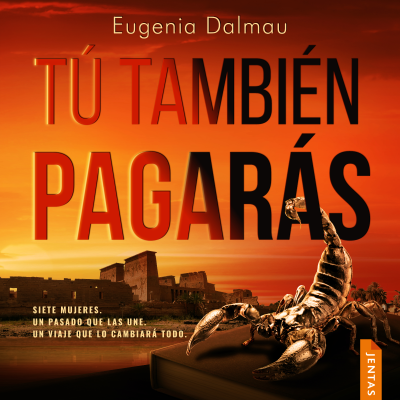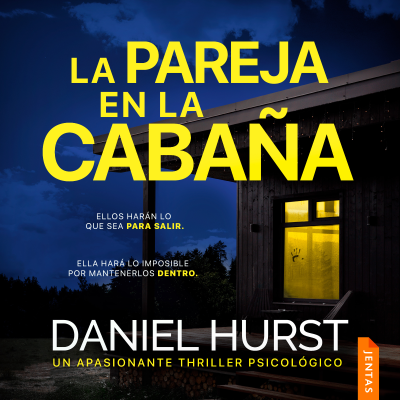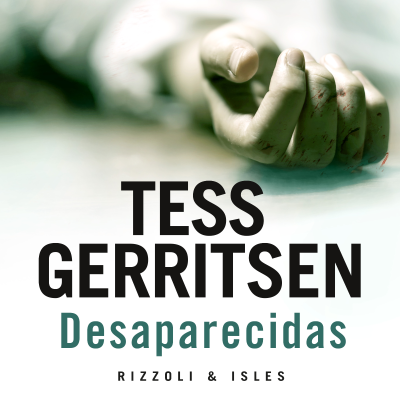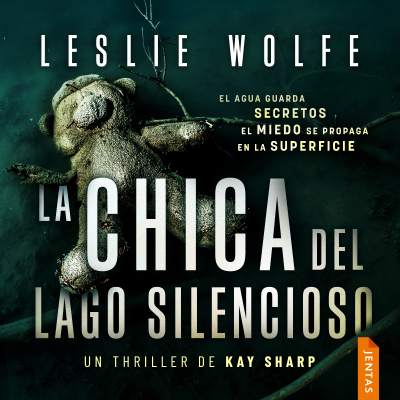
Bestsellers Club
inglés
Entretenimiento
Disfruta 30 días gratis
4,99 € / mes después de la prueba.Cancela cuando quieras.
- 20 horas de audiolibros / mes
- Podcasts solo en Podimo
- Podcast gratuitos
Acerca de Bestsellers Club
Expand your mind by reading bestselling ideas https://www.bookey.app/
Todos los episodios
500 episodiosThe Elite: An Engaging Audio Summary of Kiera Cass's Captivating Tale
HEADING TEXT1 WHAT'S THE ELITE "The Elite" by Kiera Cass is the second book in the "Selection" series and continues the story of America Singer as she navigates the complexities of love and competition in a dystopian monarchy. The overall theme revolves around the struggle for identity and the challenges of making choices that impact personal happiness versus societal expectations. As America advances to the next stage of the Selection process, she grapples with her feelings for Prince Maxon and her lingering attachment to her first love, Aspen. The narrative explores themes of loyalty, sacrifice, and the tension between love and duty, ultimately highlighting America’s journey towards self-discovery and her quest to find her place within a rigid societal structure. HEADING TEXT2 KEY CONCEPTS OF THE ELITE In "The Elite" by Kiera Cass, the theme of choice and the impact of decisions is critically explored throughout the narrative, particularly in chapters 2, 5, and 8. In Chapter 2, we see the initial weight of choices as the remaining Elite members grapple with their feelings and aspirations in the context of the Selection process. Chapter 5 delves deeper into the conflicts and dilemmas faced by the characters, highlighting how their decisions shape their relationships and futures. By Chapter 8, the consequences of these choices become more pronounced, as characters must confront the reality of their decisions and what they mean for their identities and desires, reinforcing the overarching theme established in Chapter 1. HEADING TEXT3 IN-DEPTH CHAPTER ANALYSIS OF THE ELITE BY KIERA CASS, In "The Elite" by Kiera Cass, the chapters intricately weave themes of love, competition, and identity as they unfold in the context of the Selection process. For instance, Chapter 5 captures the heightened tension among the remaining contestants as they grapple with their feelings for Prince Maxon while navigating their relationships with one another. This chapter exemplifies the theme of competition, highlighting how the pressure to win Maxon’s affection distorts their friendships and leads to jealousy and rivalry. Specific moments, such as America’s internal struggle with her loyalties to Maxon and her past with Aspen, underscore the complexity of love intertwined with the stakes of the Selection, showcasing her growing awareness of her own feelings. In Chapter 10, the theme of identity comes to the forefront as America begins to question not only her role within the palace but also her own values and desires. This chapter exemplifies her transformation as she starts to assert her individuality in the face of the societal expectations placed upon her as a Selected. Her candid moments with Maxon reveal her growing sense of self and the realization that her love for him cannot overshadow her own principles. For example, when America defies a royal protocol to stay true to herself, it marks a pivotal moment in her character development, emphasizing the importance of staying authentic amidst external pressures. Together, these chapters illustrate how personal growth and relational dynamics play a critical role in the overarching themes of love and identity within the narrative. Book Summary Audio Bookey https://www.bookey.app/audiobook/the-elite [https://www.bookey.app/audiobook/the-elite_] Quotes https://www.bookey.app/book/the-elite/quote [https://www.bookey.app/book/the-elite/quote_] Youtube https://www.youtube.com/watch?v=Haa64lCzMIE [https://www.youtube.com/watch?v=Haa64lCzMIE_] Amazon https://www.amazon.com/Elite-Selection-Kiera-Cass/dp/0062059971 [https://www.amazon.com/Elite-Selection-Kiera-Cass/dp/0062059971_] Goodreads https://www.goodreads.com/book/show/16248068-the-elite [https://www.goodreads.com/book/show/16248068-the-elite_]
The Starless Sea: An Enchanting Audio Summary of Erin Morgenstern's Masterpiece
HEADING TEXT1 WHAT'S THE STARLESS SEA "The Starless Sea" by Erin Morgenstern explores the themes of storytelling, love, and the interconnectedness of lives through a fantastical narrative centered around a mysterious underground world filled with stories, keys, and doors. The protagonist, Zachary Ezra Rawlins, discovers a hidden library and embarks on a quest that weaves through various realms, intersecting with a cast of intriguing characters, each linked by their own tales. The novel plays with the fluidity of time and the magic of narratives, ultimately celebrating the power of stories to bridge gaps between people and illuminate paths in the dark. HEADING TEXT2 KEY CONCEPTS OF THE STARLESS SEA In The Starless Sea, the theme of storytelling and the interconnectedness of narratives is prominently established in Chapter 1, where Zachary discovers a mysterious book filled with stories that intertwine reality and fiction. This theme resonates throughout several chapters, particularly in Chapters 2, 5, and 10, where the labyrinthine nature of the story is explored more deeply. In Chapter 2, the concept of stories as portals is highlighted, while Chapter 5 delves into the significance of choices and their impact on different narratives. Chapter 10 further examines the cyclical nature of stories and the idea that every tale leads to another, reinforcing the essential theme introduced at the beginning. HEADING TEXT3 IN-DEPTH CHAPTER ANALYSIS OF THE STARLESS SEA BY ERIN MORGENSTERN, In "The Starless Sea" by Erin Morgenstern, the chapters weave a complex tapestry of interconnected stories that explore the themes of love, fate, and the power of storytelling. Early chapters, such as those that introduce Zachary Ezra Rawlins, highlight the theme of fate as Zachary discovers a mysterious book that draws him into a whimsical underground world. This world, filled with labyrinthine stories and characters like the enigmatic Dorian and the playful Bee, serves as a metaphor for the unpredictability of life and the intertwined destinies of individuals. For example, when Zachary finds himself on a journey through the Starless Sea, it becomes clear that his experiences are not random but part of a larger narrative that reflects the idea that individuals are often both seekers and seekers of meaning. As the narrative progresses, later chapters delve deeper into the significance of storytelling itself, emphasizing its ability to connect disparate lives and experiences. The chapter where Zachary encounters the Guardian of the Key exemplifies this theme, as it underscores the importance of choices and the paths they lead to. The book's many layers mirror the multifaceted nature of human emotions and relationships, suggesting that every story is a thread in the broader tapestry of existence. Moments of sacrifice, such as those made by minor characters for the sake of love or connection, serve to bolster this central theme, ultimately leading to a resolution that celebrates the beauty of stories and their enduring impact on our lives. Through these chapters, Morgenstern illustrates how stories shape our identities and bind us to one another across time and space. Book Summary Audio Bookey https://www.bookey.app/audiobook/the-starless-sea [https://www.bookey.app/audiobook/the-starless-sea_] Quotes https://www.bookey.app/book/the-starless-sea/quote [https://www.bookey.app/book/the-starless-sea/quote_] Youtube https://www.youtube.com/watch?v=L6pY1-pEShE [https://www.youtube.com/watch?v=L6pY1-pEShE_] Amazon https://www.amazon.com/Starless-Sea-Novel-Erin-Morgenstern/dp/038554121X [https://www.amazon.com/Starless-Sea-Novel-Erin-Morgenstern/dp/038554121X_] Goodreads https://www.goodreads.com/book/show/43575115-the-starless-sea [https://www.goodreads.com/book/show/43575115-the-starless-sea_]
The Shallows: Engaging Audio Summary of Nicholas Carr's Exploration of Digital Distraction
HEADING TEXT1 WHAT'S THE SHALLOWS In "The Shallows: What the Internet Is Doing to Our Brains," Nicholas Carr explores the profound impact of digital technology and the internet on human cognition and attention. He argues that the constant distractions and rapid information overload associated with online life are reshaping the way we think, read, and remember, leading to a decline in deep, contemplative thinking. Carr draws on neuroscience, psychology, and personal anecdotes to illustrate how our brains adapt to new media, ultimately suggesting that while the internet offers vast knowledge and connectivity, it may also diminish our ability to engage in focused, reflective thought, impairing our intellectual capacities and cultural richness. HEADING TEXT2 KEY CONCEPTS OF THE SHALLOWS In Chapter 1 of "The Shallows" by Nicholas Carr, the theme of how the internet influences our cognitive functions is introduced, focusing on the impact of digital media on attention and deep thinking. Subsequent chapters, particularly Chapters 2, 3, and 4, delve deeper into how our brain's neuroplasticity responds to the constant stimulation of technology, ultimately reinforcing the initial theme. These chapters explore historical shifts in media and their effects on thought processes, further tying back to the central idea of the internet's detrimental effect on our ability to concentrate and engage in deep reflection. HEADING TEXT3 IN-DEPTH CHAPTER ANALYSIS OF THE SHALLOWS BY NICHOLAS CARR, In "The Shallows: What the Internet Is Doing to Our Brains," Nicholas Carr explores the profound effects of technology on our cognitive abilities across several chapters. One significant chapter is "The Vital Paths," which examines neuroplasticity and how our brains adapt to the influx of information from digital technology. Carr argues that the constant engagement with digital media—characterized by rapid shifts in attention and multitasking—diminishes our ability to engage in deep, critical thinking. For example, he discusses studies that show how individuals exposed to frequent digital interruptions struggle to focus and retain information, illustrating the theme that our dependence on technology is rewiring our brains and eroding our capacity for sustained intellectual engagement. Another key chapter is "The Internet Idiot,” where Carr delves into the consequences of information overload. He argues that the internet has created a culture of superficial skimming rather than deep reading, leading to a decline in analytical thought and comprehension. This chapter highlights how our heavy consumption of fragmented information—whether through social media or rapid-fire news articles—counters our ability to engage in deep, reflective thinking. Carr underscores this by referencing research that shows online readers tend to lose the contextual understanding necessary for advanced critical thinking tasks. Collectively, these chapters underscore a central theme: the internet, while providing vast access to information, simultaneously poses serious risks to our cognitive depth and overall intellectual capacity. Book Summary Audio Bookey https://www.bookey.app/audiobook/the-shallows [https://www.bookey.app/audiobook/the-shallows_] Quotes https://www.bookey.app/book/the-shallows/quote [https://www.bookey.app/book/the-shallows/quote_] Youtube https://www.youtube.com/watch?v=lt [https://www.youtube.com/watch?v=lt_NwowMTcg_]NwowMTcg_ Amazon https://www.amazon.com/Shallows-What-Internet-Doing-Brains/dp/0393072223 [https://www.amazon.com/Shallows-What-Internet-Doing-Brains/dp/0393072223_] Goodreads https://www.goodreads.com/book/show/9778945-the-shallows [https://www.goodreads.com/book/show/9778945-the-shallows_]
The Rise and Fall of the Third Reich: An Engaging Audio Summary
HEADING TEXT1 WHAT'S THE RISE AND FALL OF THE THIRD REICH "The Rise and Fall of the Third Reich" by William L. Shirer is a comprehensive historical account detailing the emergence, dominance, and eventual collapse of Nazi Germany. The book explores the socio-political conditions that enabled Adolf Hitler and the Nazi Party to rise to power, examining key events, ideologies, and figures that shaped the regime. Shirer provides an in-depth analysis of World War II, the Holocaust, and the moral implications of Nazi policies, ultimately portraying the Third Reich as a cautionary tale about the dangers of totalitarianism, propaganda, and blind nationalism. Through meticulous research and firsthand experiences as a journalist in Nazi Germany, Shirer underscores the catastrophic consequences of unchecked power and the fragility of democracy. HEADING TEXT2 KEY CONCEPTS OF THE RISE AND FALL OF THE THIRD REICH In "The Rise and Fall of the Third Reich" by William L. Shirer, Chapter 1 introduces the theme of the origins of Nazi power and the societal conditions that enabled its rise. This theme can be explored further in subsequent chapters, particularly Chapter 2, which delves into the Treaty of Versailles and its repercussions, and Chapter 4, which examines the impact of the Great Depression on Germany's political landscape. Additionally, Chapter 8 discusses the consolidation of Hitler's power and the elimination of opposition, illustrating how the initial societal fractures were exploited to establish a totalitarian regime. These chapters collectively highlight the interplay between historical circumstances and the emergence of the Nazi party. HEADING TEXT3 IN-DEPTH CHAPTER ANALYSIS OF THE RISE AND FALL OF THE THIRD REICH BY WILLIAM L. SHIRER, William L. Shirer's "The Rise and Fall of the Third Reich" provides a detailed narrative of Nazi Germany's ascent and demise, structured through thematic chapters that explore the ideological, political, and social factors leading to its rise and inevitable collapse. The early chapters focus on the ideological foundations of Nazism and the socio-political climate in post-World War I Germany, particularly illuminated in Chapter 1, "Germany: A Nation in Crisis," where Shirer discusses the Treaty of Versailles' repercussions and the economic turmoil that spawned extremist ideologies. Here, he emphasizes how these conditions facilitated Hitler's ascension by exploiting national trauma and resentment, setting the stage for the totalitarian regime's rise. As the narrative progresses, chapters like "The Triumph of the Third Reich" and "The Devil's Pact," delve into the consolidation of power and the appeasement policies of the world powers that allowed Nazi Germany to expand unchecked. Specific examples include the examination of events like the Munich Agreement and the swift militarization of the Rhineland, showcasing how international indifference emboldened Hitler’s aggression. Ultimately, Shirer culminates in chapters detailing the war's horrors and the regime's moral and operational failures, such as "The End of the Third Reich," reinforcing the overarching theme of how totalitarianism, built on ideology and power struggles, ultimately leads to self-destruction amidst widespread devastation. This thematic coherence across the chapters not only narrates a historical account but serves as a cautionary tale about the dangers of unchecked nationalism and authoritarianism. Book Summary Audio Bookey https://www.bookey.app/audiobook/the-rise-and-fall-of-the-third-reich [https://www.bookey.app/audiobook/the-rise-and-fall-of-the-third-reich_] Quotes https://www.bookey.app/book/the-rise-and-fall-of-the-third-reich/quote [https://www.bookey.app/book/the-rise-and-fall-of-the-third-reich/quote_] Youtube https://www.youtube.com/watch?v=3UVTQNGgvOU [https://www.youtube.com/watch?v=3UVTQNGgvOU_] Amazon https://www.amazon.com/Rise-Fall-Third-Reich-History/dp/1451651686 [https://www.amazon.com/Rise-Fall-Third-Reich-History/dp/1451651686_] Goodreads https://www.goodreads.com/book/show/767171.The [https://www.goodreads.com/book/show/767171.The_Rise_and_Fall_of_the_Third_Reich_]RiseandFalloftheThirdReich_
The Culture of Critique: Engaging Audio Summary of MacDonald's Controversial Insights
HEADING TEXT1 WHAT'S THE CULTURE OF CRITIQUE "The Culture of Critique" by Kevin B. MacDonald explores the influence of Jewish culture and intellectual movements on modern Western society, particularly focusing on psychoanalysis, Marxism, and critical theory. MacDonald posits that these movements have contributed to a broader cultural critique that undermines traditional Western values and institutions. The book delves into the historical context of Jewish involvement in these fields, arguing that their contributions are rooted in a distinct ethno-centric perspective that seeks to challenge and transform dominant cultural narratives. Overall, MacDonald's work has been controversial and widely critiqued for its implications and interpretations regarding ethnicity, identity, and social dynamics. HEADING TEXT2 KEY CONCEPTS OF THE CULTURE OF CRITIQUE In "The Culture of Critique," Kevin MacDonald explores themes of group identity and cohesion, particularly focusing on Jewish intellectual movements and their influence on Western culture. The chapters that particularly relate to these themes include Chapter 2, which discusses Jewish involvement in the Frankfurt School and its impact on critical theory, and Chapter 3, which examines Jewish contributions to psychoanalysis and its effects on cultural perspectives. Additionally, Chapter 4 addresses the role of Jews in shaping social and political movements, further emphasizing the dynamics of group identity and its critique of mainstream societal values, resonating with the foundational topics introduced in Chapter 1. HEADING TEXT3 IN-DEPTH CHAPTER ANALYSIS OF THE CULTURE OF CRITIQUE BY KEVIN B. MACDONALD, "The Culture of Critique" by Kevin B. MacDonald is structured around three primary chapters that explore the influence of Jewish intellectual movements in shaping modern cultural narratives. In Chapter 1, MacDonald discusses the emergence of psychoanalysis, emphasizing how figures like Sigmund Freud and his followers contributed to the understanding of human behavior through a lens that intertwined personal and cultural experiences. This chapter connects to the overarching theme by illustrating the divergence of Jewish thought, often positioning it in opposition to traditional Western values, thereby posing challenges to established social norms. The subsequent chapters delve into the broader implications of Jewish contributions to critical theory and the Frankfurt School, highlighting their roles in promoting cultural Marxism and postmodernism. In Chapter 2, MacDonald critiques the impact of Jewish intellectuals on social sciences, particularly how their ideas fostered a narrative that often undermined the cohesion of Western society. Chapter 3 further examines the emergence of leftist political movements and their relationships with Jewish identity, underpinning a critical examination of how these ideas perpetuate a particular worldview. Together, these chapters reinforce MacDonald's thesis regarding the cultural critique’s role in reshaping social dynamics and the resulting tensions within Western civilization, showcasing how Jewish intellectualism has been both a catalyst for change and a source of cultural conflict. Book Summary Audio Bookey https://www.bookey.app/audiobook/the-culture-of-critique [https://www.bookey.app/audiobook/the-culture-of-critique_] Quotes https://www.bookey.app/book/the-culture-of-critique/quote [https://www.bookey.app/book/the-culture-of-critique/quote_] Youtube https://www.youtube.com/watch?v=zyQ5f [https://www.youtube.com/watch?v=zyQ5f_ixZrw_]ixZrw_ Amazon https://www.amazon.co.jp/Culture-Critique-Evolutionary-Twentieth-Century-Intellectual/dp/B0FNQD5SRT [https://www.amazon.co.jp/Culture-Critique-Evolutionary-Twentieth-Century-Intellectual/dp/B0FNQD5SRT_] Goodreads https://www.goodreads.com/book/182136.The [https://www.goodreads.com/book/182136.The_Culture_of_Critique/questions_]CultureofCritique/questions_
Elige tu suscripción
Premium
20 horas de audiolibros
Podcasts solo en Podimo
Podcast gratuitos
Cancela cuando quieras
Disfruta 30 días gratis
Después 4,99 € / month
Premium Plus
100 horas de audiolibros
Podcasts solo en Podimo
Podcast gratuitos
Cancela cuando quieras
Disfruta 30 días gratis
Después 9,99 € / month
Disfruta 30 días gratis. 4,99 € / mes después de la prueba. Cancela cuando quieras.

































